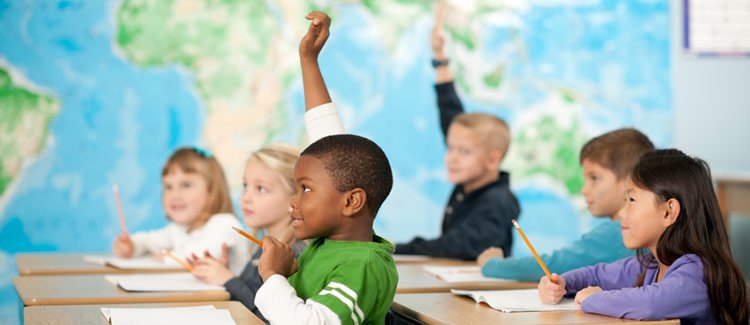Preparing your child for Kindergarten: tips for success
Wiki Article
Imaginative Understanding Activities in Preschool: Enhancing Abilities With Play and Communication
Innovative understanding activities in preschool work as fundamental experiences for young students (Kindergarten). These activities encourage ability growth through lively interaction and social interaction. Youngsters discover their creative thinking, boost interaction, and learn important social skills. Each experience adds to their development in special ways. Recognizing exactly how these activities form very early advancement reveals the extensive effect of play in education and learning. What particular aspects make these experiences so efficient in supporting all-round people?The Role of Play in Early Childhood Advancement
While numerous may underestimate the significance of play, it works as an essential part of early childhood years development. Through play, children discover their settings, foster social abilities, and establish cognitive capabilities. Participating in disorganized activities permits them to utilize their imagination, explore analytical, and enhance their vital reasoning skills. Play gives a safe area for emotional expression, allowing kids to browse their feelings and construct resilience.In addition, play encourages physical development as children engage in tasks that enhance their motor abilities and coordination. Interaction with peers throughout play advertises teamwork and communication, preparing for future relationships. Grade School Peoria. Educators and parents recognize that play is not merely a leisure activity however an important aspect of discovering, forming a youngster's capability to flourish and adjust in numerous scenarios. Inevitably, play improves kids's lives, preparing them for the obstacles of the future while promoting a lifelong love for knowing
Imaginative Arts and Crafts: Triggering Imagination
Innovative arts and crafts play a substantial duty in igniting children's creative imaginations and improving their innovative skills. These tasks urge self-expression through various mediums, such as painting, attracting, and sculpting. By participating in hands-on jobs, youngsters find out to adjust products, cultivating fine motor skills and hand-eye control.Imaginative arts supply a system for important and problem-solving reasoning, as kids check out different methods and strategies to their creations. This expedition enables them to experiment, make decisions, and discover from their experiences.
Cooperation is one more vital element, as youngsters often interact on team tasks, sharing ideas and sources. This communication not just constructs social abilities but additionally supports a feeling of community. Ultimately, innovative arts and crafts serve as necessary tools in a kindergarten setup, promoting cognitive, emotional, and social growth while triggering the natural interest and creativity of young students.
Interactive Storytelling: Building Language Abilities
Interactive storytelling functions as a powerful tool for developing language skills in young kids, as it engages them in the narrative process and encourages active engagement. With storytelling sessions, children are welcomed to pay attention, respond, and even add to the unraveling story. This interactive style supports vocabulary growth by exposing them to brand-new words in context.As they take part, youngsters practice important communication skills, such as expression and expression. They discover to sequence events, recognize characters, and understand the story, cultivating critical reasoning. In addition, interactive narration usually includes aesthetic help, sound impacts, and props, which better improve engagement and understanding.
When kids share their very own tales, they experience a feeling of firm and creativity, strengthening their language abilities in an encouraging environment. Inevitably, interactive narration grows a love for language and literary works, setting a strong structure for their future academic success.
Hands-On Science Experiments: Motivating Inquiry
Hands-on science experiments give young learners with important possibilities to ask and discover regarding the world around them. Engaging in easy, interactive experiments enables kindergarteners to ask questions, make predictions, and observe outcomes firsthand. These activities promote inquisitiveness and foster a sense of wonder, motivating children to check out the buildings of products, responses, and natural sensations.For example, experiments such as growing seeds or mixing baking soft drink and vinegar not only illustrate scientific ideas however additionally improve essential believing see this here abilities. Children learn to document their monitorings, advertising literacy and numeracy as they determine, compare, and document information. Additionally, hands-on scientific research promotes a development mindset, mentor resilience as they navigate obstacles and pick up from errors.

Collaborative Gamings: Promoting Team Effort and Social Skills
Engaging in collaborative video games provides kindergarteners a distinct system to develop teamwork and social abilities while improving the inquiry-based knowing promoted by hands-on science experiments (Grade School). These video games urge children to interact towards typical objectives, promoting interaction and participation. As they browse different challenges, they discover to share responsibilities, negotiate duties, and resolve disputes-- important elements of effective teamworkVia organized tasks such as group challenges, relay races, or participating storytelling, kids not just boost their social interactions but additionally strengthen their psychological knowledge. They gain understandings right into empathy and support, discovering that each youngster's payment is beneficial. Furthermore, these joint experiences promote a sense of community within the class, developing bonds that prolong beyond private play. By incorporating collaborative video games right into the curriculum, educators can prepare for crucial life abilities that will profit youngsters in their future educational and social atmospheres.
Regularly Asked Questions
How Can Parents Assistance Creative Discovering in your home?
Parents can support creative learning in the house by providing varied products, urging exploration, participating in creative play, asking flexible inquiries, and promoting a safe atmosphere where children do not hesitate to reveal their concepts and imagination.
What Products Are Best for Arts and Crafts Activities?
A variety of products boost crafts and arts activities, Extra resources consisting of building and construction paper, scissors, adhesive, pens, paints, and recycled products. These sources inspire creative thinking and enable youngsters to discover their creativity through hands-on experiences.Exactly How Do Educators Assess Kid's Creative thinking?
Teachers examine kids's creativity through monitorings, portfolios of work, and open-ended projects that urge self-expression. They evaluate analytical abilities, originality, and desire to experiment, offering understandings into each kid's special innovative growth and capacities.What Are Some Examples of Outdoor Creative Activities?

Exactly How Can Social Motifs Be Integrated Into Creative Discovering?
Cultural themes can be integrated right into imaginative understanding by including diverse stories, songs, art, and practices, motivating children to explore and commemorate various histories, fostering inclusivity and understanding while enhancing their creative thinking and cognitive abilities.Children discover their imagination, boost interaction, and learn beneficial social skills. Through play, kids explore their atmospheres, foster social skills, and create cognitive capabilities. Furthermore, play encourages physical growth as kids engage in activities that boost their motor skills and sychronisation. Imaginative arts and crafts play a substantial duty in stiring up kids's creativities and enhancing their innovative abilities. Interactive storytelling serves as a powerful tool for building language skills in young youngsters, as it engages them in the narrative procedure and encourages active participation.
Report this wiki page